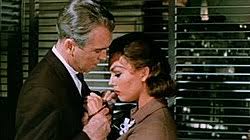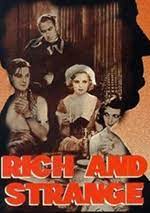
Alfred Hitchcock’s masterpiece of voyeurism, imagination and obsession, desire and control, was released on this day 66 years ago. Only recently deposed from its position as the greatest film of all time in the ten-year Sight & Sound poll, it was a flop on its release. As David Thomson says, We have learned how to watch it, and we have discovered the mortified figure Hitchcock often masked with his comedian persona. Charles Barr describes its impact: This story of a man who develops a romantic obsession with the image of an enigmatic woman has commonly been seen, by his colleagues as well as by critics and biographers, as one that engaged Hitchcock in an especially profound way; and it has exerted a comparable fascination on many of its viewers.

Adapted by Alec Coppel & Samuel Taylor (with an initial uncredited draft from playwright Maxwell Anderson) from Boileau- Narcejac’s novel D’entre les morts (trans: The Living and the Dead) it can be summarised as a haunting.

Retired San Francisco police detective John ‘Scotty’ Ferguson (James Stewart) is hired by wealthy old friend Gavin Elster (Tom Helmore) to investigate his wife Madeleine (Kim Novak) who is exhibiting strange behaviour.

He rescues her from the water at the Golden Gate Bridge near Fort Point.

He fails to save her when she plunges to her death from the bell tower at Mission San Juan Bautista.

He meets Judy (Kim Novak), a dead ringer for Madeleine.

He makes her over so she looks identical to Madeleine …

There were mixed reviews although critics in the US liked it rather more than their British counterparts. Eric Rohmer’s review for Cahiers du Cinema commented, Ideas and forms follow the same road, and it is because the form is pure, beautiful, rigorous, astonishingly rich, and free that we can say that Hitchcock’s films, with Vertigo at their head, are about ideas, in the noble, platonic sense of the word.

